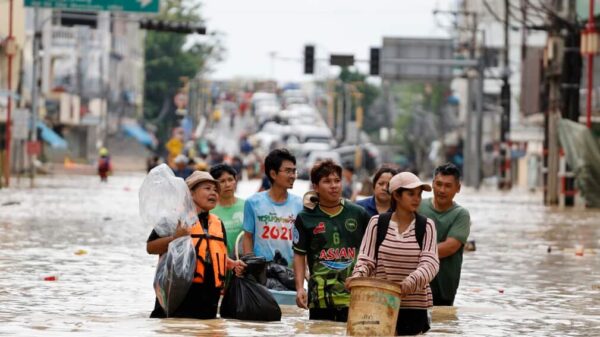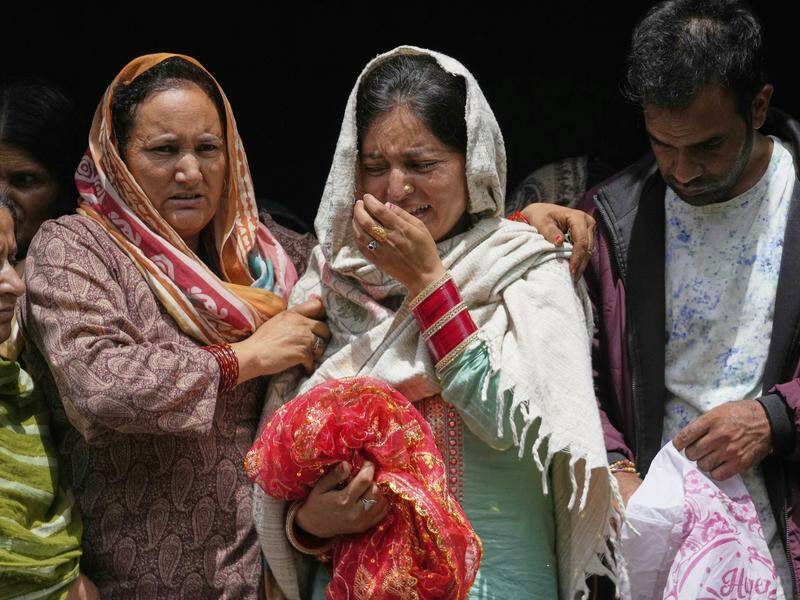Flash floods have resulted in the tragic deaths of over 280 people and left many others missing across India and Pakistan. Rescuers have successfully evacuated approximately 1,600 individuals from two mountainous districts in these neighboring countries. The severe weather has prompted urgent rescue operations, highlighting the increasing frequency and intensity of such natural disasters in the region.
In Pakistan, a helicopter carrying essential relief supplies to the flood-affected area of Bajaur crashed on Friday due to adverse weather conditions. All five people onboard, including two pilots, perished in the incident, as confirmed by a government statement. The area has been hit hard by sudden, intense downpours known as cloudbursts, which are becoming increasingly common in the Himalayan regions of both countries.
These cloudbursts can unleash catastrophic flooding and landslides, affecting thousands of residents in the vulnerable mountainous areas. Experts attribute the rise in these events to climate change, compounded by unplanned development in fragile ecosystems. In India-controlled Kashmir, rescue teams searched for missing individuals in the remote village of Chositi, where flash floods on Thursday resulted in at least 60 fatalities and left around 80 people unaccounted for.
Rescue operations were temporarily halted overnight, but officials reported the successful retrieval of at least 300 individuals on Thursday following a powerful cloudburst that triggered the floods. Many of the missing are feared to have been swept away by the fast-moving waters. Local resident Harvinder Singh joined the rescue efforts immediately after the disaster, helping retrieve 33 bodies from the mud.
At least 50 seriously injured individuals received treatment in local hospitals, many rescued from streams filled with debris. Disaster management official Mohammed Irshad indicated that the number of missing people could rise further, and weather forecasts predict more heavy rain and flooding in the region.
Chositi, located in Kishtwar district, serves as the last accessible village for vehicles along the route of an ongoing annual Hindu pilgrimage to a shrine situated at an altitude of 3,000 metres. The pilgrimage, which began on July 25, 2023, and was scheduled to conclude on September 5, 2023, has been suspended due to the disaster. Floodwaters destroyed the primary community kitchen set up for pilgrims, where over 200 individuals were present at the time of the flood, along with numerous vehicles and motorbikes.
One villager, identified only as Sneha, recounted the harrowing experience of losing her husband and daughter to the floodwaters while they were eating at the community kitchen. She and her son narrowly escaped the surge. Images circulating on social media depict significant destruction, with household items scattered among damaged vehicles and homes in the village.
In response to the crisis, authorities constructed makeshift bridges to allow stranded pilgrims to cross muddy channels and deployed numerous earthmovers to clear away debris, including uprooted trees and electricity poles. Kishtwar district is home to several hydroelectric power projects, posing ongoing risks to the region’s already delicate ecosystem.
Meanwhile, in northern and northwestern Pakistan, flash floods claimed at least 243 lives over the past 24 hours, with 157 fatalities reported in the flood-affected Buner district on Friday. Local resident Mohammad Suhail informed the Associated Press that dozens remain missing as rescue operations continue. By midday Friday, 78 bodies had been recovered from various locations, followed by another 79 bodies found amidst the rubble of collapsed homes and flooded villages.
The ongoing situation underscores the urgent need for effective disaster management and climate resilience strategies in these vulnerable regions.





























































